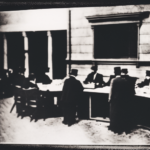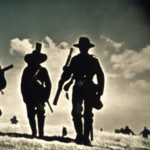One-line summary:
Mythologies by Roland Barthes explores the hidden meanings and cultural significance behind everyday objects and popular culture, revealing how they shape our understanding of the world.
Decoding the Myths of Everyday Life
In Mythologies, Roland Barthes delves into the realm of semiotics to uncover the hidden meanings and cultural significance behind everyday objects, events, and popular culture. Through a series of essays, Barthes explores how these myths shape our understanding of the world and influence our behavior and beliefs.
Barthes begins by examining the concept of myth itself, arguing that myths are not merely ancient tales or religious stories, but rather a system of signs that operate within society. He asserts that myths are created by society to maintain the status quo and reinforce dominant ideologies. By analyzing a wide range of topics, from wrestling matches to soap advertisements, Barthes reveals the underlying myths that permeate our daily lives.
The Power of Language and Symbols
Language and symbols play a crucial role in the creation and perpetuation of myths. Barthes dissects the language used in various contexts, such as political speeches and fashion magazines, to uncover the hidden meanings and ideologies embedded within them.
For example, he examines the language of wrestling, arguing that it is not just a sport but a theatrical performance that reinforces the myth of good versus evil. Through the use of exaggerated gestures and dramatic narratives, wrestling creates a binary opposition that mirrors societal values and reinforces the belief in a moral order.
Similarly, Barthes analyzes the language of advertising, particularly the myth of the “perfect” body perpetuated by beauty products and fashion magazines. He argues that these advertisements create a false sense of desire and perpetuate unrealistic beauty standards, ultimately reinforcing the myth that one’s worth is determined by their appearance.
The Cultural Significance of Everyday Objects
Barthes also explores the cultural significance of everyday objects, revealing how they are imbued with meaning and contribute to the construction of myths. He examines objects such as cars, toys, and food, uncovering the hidden ideologies and social values associated with them.
For instance, Barthes discusses the myth of the French wine and cheese, arguing that it represents a certain idea of Frenchness and cultural superiority. He suggests that these objects are not just products but symbols that reinforce national identity and cultural pride.
Similarly, Barthes analyzes the myth of the “natural” in food advertisements, revealing how the language and imagery used create a sense of authenticity and purity. He argues that this myth serves to justify the industrial production of food and perpetuate the belief that natural products are superior.
Key Takeaways:
- Myths are not just ancient tales but a system of signs created by society to maintain the status quo and reinforce dominant ideologies.
- Language and symbols play a crucial role in the creation and perpetuation of myths, shaping our understanding of the world.
- Everyday objects are imbued with cultural significance and contribute to the construction of myths, reflecting societal values and beliefs.
“Myth is a type of speech.” – Roland Barthes
In Mythologies, Roland Barthes invites readers to question the hidden meanings and ideologies that shape our understanding of the world. By decoding the myths of everyday life, he reveals the power of language, symbols, and objects in perpetuating dominant ideologies. This thought-provoking exploration serves as a reminder to critically examine the cultural narratives that surround us and to challenge the myths that shape our beliefs and behaviors.












